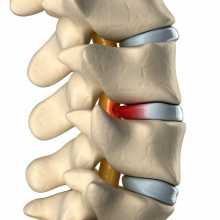Spondylosis refers to degenerative changes in the spine which may be neurologically asymptomatic or may cause symptoms by compression of nerve roots or spinal cord. Spondylotic changes consist of inter-vertebral disk, osteophyte formation, and thickening of spinal ligaments. These changes most frequently involve the cervical or lumbar spine and are rare in the thoracic region. The term spondylosis is not generally used to describe acute protrusion of intervertebral discs, although the two conditions may be associated.
Parthenogenesis of Spondylosis
Spondylosis presumably results from the “wear and tear” of repeated spinal movement. Al- though more than one half of people older than 50 years of age have cervical spine osteophytes, associated neurologic symptoms and signs are much less frequent. The single most important factor in the development of clinical manifestations caused by spondylosis is the size of the spinal canal. If the canal is congenitally narrow, the spinal cord or roots may be compressed by relatively small osteophytes or ligamentous hypertrophy; on the other hand, a wide spinal canal may exten- Sive spondylotic changes without causing appreciable neurologic signs of compression.
When the cervical spinal cord is compressed by os- teophytes from the vertebral bodies or by thickening of the posterior longitudinal ligament and ligamentum flavum, symptoms and signs may follow trauma caused by neck movement or from impairment of spinal cord circulation. The cauda equina may also be injured in lumbar spondylosis. At both the cenical and lumbar levels, nerve roots are compressed by degenerative changes in bone and soft tissues adjacent to the intervertebral foramina.
Clinical Manifestations of Spondylosis
Cervical Spondylosis. The most important symptoms and signs of’ cervical spondylosis are due to spinal cord (cervical myelopathy) and root (cervical radiculopathy) compression.
Spondylosis Diagnosis.
X-rays of the cervical spine confirm the presence or cervical spondylosis. However, there is a high incidence of asymptomatic spondylotic changes, and careful clinical correlation is required for interpreta- tion of such radiologic findings. To prove the diagnosis of cervical spondylotic myelopathy, the anteroposterior diameter of the cervical canal must be measured. If this measurement is less than 10 mm, there is almost certain cord compression. The extent of compression can best be determined by myelography which also shows soft tissue changes in spondylosis. Oblique x-ray views demonstrate narrowing of the inter vertebra.
Prognosis and Treatment of Spondylosis
Because of wide variations in the natural course of cewical spondylotic myelopathy, it is difficult to assess the relative merits of conservative and surgical management. Recent advances in surgical techniques have been accompanied by more effective relief of spinal cord compression in patients with advancing or rapidly progressing disability. Other patients can usually be managed effectively with analgesics, muscle relaxants, and cervical immobilization.

